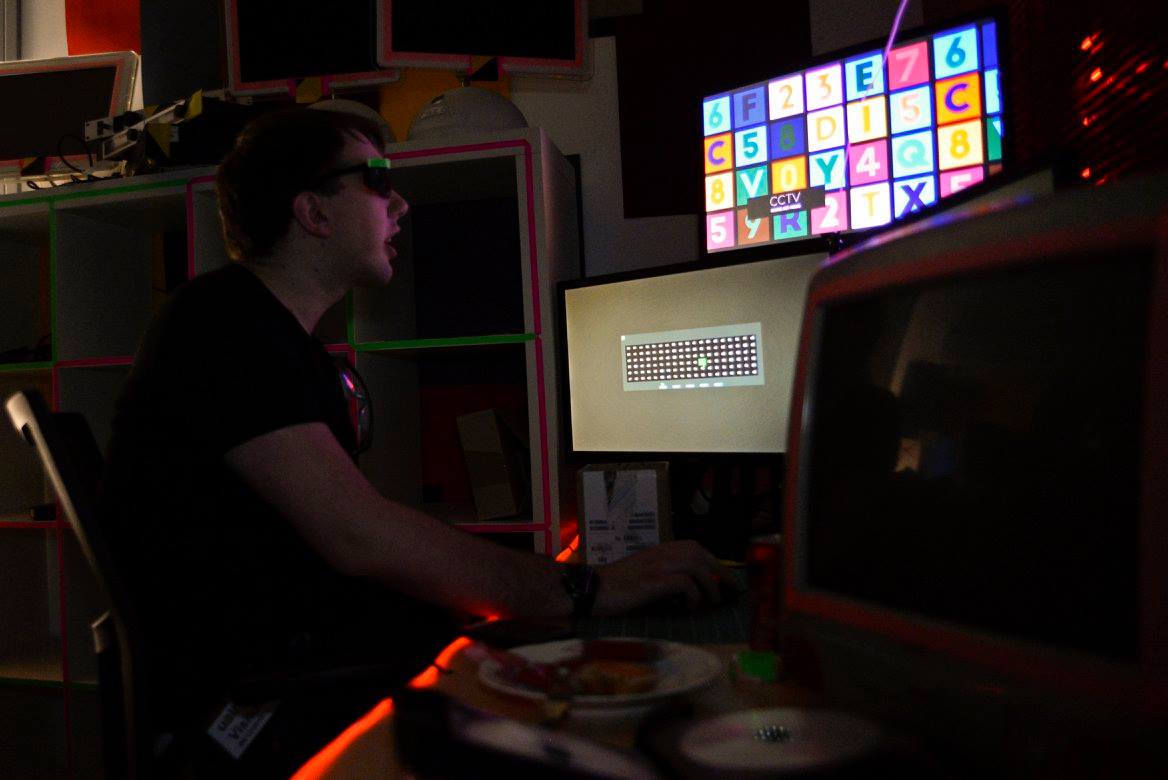Words by Ian Gustav Ahlberg, BA(Hons) Public Relations graduate (2016).
MA Games Design students Adam Curtis, Chris Li, Alex He, Tesh Samuels and Luyao (Nikki) Wang recently created an Escape the Room game as part of their course project.
Combining elements of video games, haunted houses, set design and puzzles, players are challenged to use problem solving and teamwork skills to decrypt clues and escape from a locked room within 1 hour. These games have become hugely popular in recent years, with almost 600 escape room venues across Britain.
We caught up with the students behind Escape the Room.
The Escape Room is an interesting type of game, where the player is immersed into a different world, how did you decide to create Escape the Room for your project?
Group: Over the past 2 years, escape games have surged in international revere, with all kinds of escape experiences available to anyone seeking a challenge. In light of its success and burgeoning popularity, the course granted us the ability to stake our claim in the market.
Why do you think games like Escape the Room are becoming so popular?
Group: The broad spectrum of Escape the Room experiences on offer satisfies a substantial audience, enticing those who otherwise wouldn’t engage in an activity of game play for an afternoon. Assembling a team and tackling challenges involving spatial reasoning and logic puzzles together, is something people are onboard with.
What are the basic elements required to make a game fun and engaging?
Group: Ensuring player engagement in a puzzle environment can be stripped down to challenge and reward. Escape the Room games involve exploration and discovery of a physical space and can surpass expectations for even the most experienced players. The satisfaction of ‘defeating the beast’ is enough for players to go on and find their next opportunity to escape.
Why did you decide to start studying MA Games Design at LCC?
Adam: I decided to study MA Games Design to breach new technology in the name of interaction and deliver new experiences for people to play.
Chris: I want to control the human species by shaping their behaviour via games.
Tesh: I’m really good at 3D stuff so MA Games Design was a way to develop this further.
What do you think are the most interesting elements of your course that others might not expect?
Group: On the MA Games Design course at LCC, we experiment inside and outside of the digital space and tinker with a more physical aspect of games. For example, board games and Escape the Room! We also look at memory, question the nature of play and consider the effects of artificial intelligence and its impact on the industry.
How do you think the course has impacted your development as a designer?
Adam: I couldn’t code before, but I can definitely code now!
Alex: Having previously studied graphic design, my perspective of games and game design as a practice has vastly improved since joining MA Games Design. I also code now!
Chris: Transitioning from a mathematics degree into a more design-oriented discipline, I have established an appreciation for design principles from multiple perspectives.
Tesh: I feel more confident in my ability to code games.
Nikki: The course has made me more confident in my general design practices and how I approach designing games.
Describe your course in three words!
Adam: Steam, overwhelmingly positive.
Alex: Eat. Code. Sleep.
Chris: Fun, fun, fun.
Tesh: It’s great fun.
Nikki: Interesting. Fun. Creative.
How do you think the fast pace of technology will change Games Design in the future?
Group: The games industry runs parallel with advancements in technology. Supplying the tools and means to deliver new experiences, whilst feeding user-experience into the development of new technology, will help shape games design in the future.
What other projects are you working on at the moment?
Group: We’re currently exploring our options, potentially tapping into new technologies and creating our own in the pursuit of the new.
We wish the students best of luck with their studies, and look forward to more afternoons of game play!






